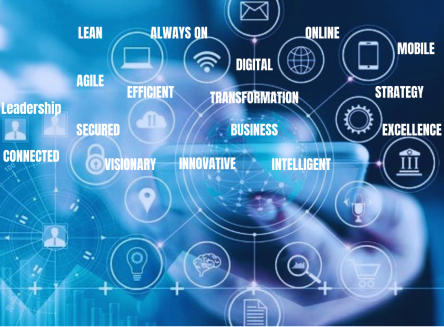Software as a Service
SaaS means Software as a Service has started picking up in last decade as Internet presence and usage continue to increase. Software as a Service is based on pay as you go concept. It allows enterprises to get software as a service and pay for their usage only and thus making it affordable to smaller and medium enterprises.
More and more SaaS is offered using Cloud services means the application is hosted in an internet enabled data center and can be easily scaled based on enterprise demand. The costing model for SaaS normally is usage based comprising of number of users, resources they would use like number of days, number of transactions etc. SaaS based systems can be accessed using web browser (thin client) and not PC installed fat client software hence saving any maintenance, update and client software costs for enterprises.
As per Gartner Group report of 2011, SaaS services revenue has reached $10 billion by 2010 and it’s forecasted to increase to $21 billion+ by 2015. TOP 3 ERP vendors SAP, Oracle and Microsoft have also invested and offering SaaS based ERP solutions.
SAP’s SaaS Offering – SAP Business ByDesign
SAP is one the Key ERP vendors with high market share. In second half of 2007 SAP announced launch of SaaS based offering addressing small and medium enterprises. It is called SAP Business ByDesign. In August 2010 SAP Business ByDesign 2.5 was released to the market which offered further improved scalability and flexibility of choices.
Key offerings
- The solution is hosted by SAP partner and managed by SAP.
- For use by small and medium size enterprises having less than 500 users.
- Even companies requiring a low as 10 SAP Business ByDesign users can subscribe and monthly subscription ranges from $89 to $149 based on type of offering selected.
- The Solution has built in business analytics as well as application support and services.
- The offerings cover wide range of business areas. The areas covered are, Marketing, Sales, Service, Sourcing, Purchasing, Product Development, Supply Chain Planning and Control, Manufacturing, Warehousing, Logistics, Project Management, Cash Flow Management, Financials, Management Accounting, Human Resources and Employee Self Service.
Modules
- Customer Relationship Management: Includes supports processes that cover marketing, sales and service activities.
- Financial Management: Provides single, up-to-date view of financial condition by integrating core business processes and financials that cover Financials, Management Accounting and Cash Flow Management.
- Project Management: Contains an integrated project management solution.
- Supply Chain Management: Includes Supply Chain Setup Management, Supply Chain Planning and Control, and Manufacturing Warehousing and Logistics.
- Supplier Relationship Management: Focuses on relationships with suppliers, procurement processes to perform self-service procurement.
- Human Resources Management: Covers Organizational Management, Human resources, and Employee self-service.
- Executive Management Support: Helps management with better decision making. Its customized real time data analytics allow managers to accurately track the most important aspects of business.
- Compliance Management: Focuses on helping enterprises maintain compliance with changing laws and regulations and to meet regulatory standards.
Flavors
CRM Starter Package: Consists of tools that help sales people in the enterprise and covers market to order business processes. Covers marketing and sales business processes areas.
Financial Starter Package: Focuses on core financials functionality that includes cash flow management, financials and account management, Human Resources and Project Management.
Professional Services Starter Package: Focuses on offering most of Market to Order and Order to Cash business processes. It does not cover Idea to Market processes and modules. Areas covered are Marketing, Sales, Sourcing, Purchasing, Project Management, Cash Flow Management, Financials, Management Accounting, Human Resources and Employee Self Service.
Configured for your business: This option makes all modules and functionalities available and is configured by SAP based on business demand and needs.
All in all SAP Business ByDesign offers complete business process integration and automation solution to small and medium enterprises at lower costs of ownership and faster implementation, expansion and use.
